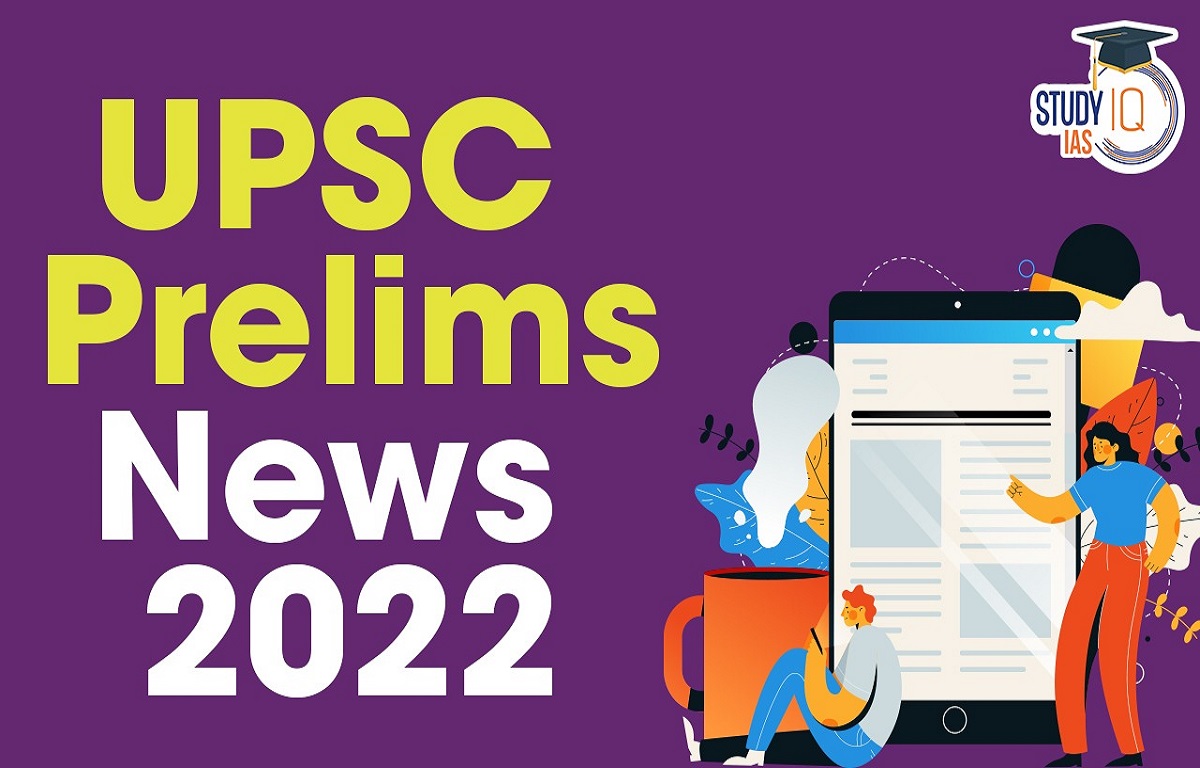UPSC Prelims News of 10 December 2022
GHAR – GO Home Portal
Context: National Commission for Protection of Child Rights (NCPCR), has developed and launched a portal namely GHAR – GO Home and Re-Unite (Portal for Restoration and Repatriation of Child).
Highlight
- GHAR portal has been developed to digitally monitor and track the restoration and repatriation of children according to the protocol.
- The following are the salient features of the portal:
- Digital tracking and monitoring of children who are in the Juvenile Justice system and have to be repatriated to another Country/State/District.
- Speedy Repatriation Of Children: Digital transfer of cases of children to the concerned Juvenile Justice Board/Child Welfare Committee of the State.
- Digitally Monitoring Progress by Child Welfare Committees and District Child Protection Officers can ensure proper restoration and rehabilitation of children.
Juvenile Justice (Care and Protection of Children) Act, 2015
- Ministry of Women and Child Development is administering the Juvenile Justice (Care and Protection of Children) Act, 2015 (JJ Act, 2015) (as amended in 2021) and Rules thereunder, for ensuring safety, security, dignity and well-being of children.
- Child Welfare Committees have been empowered to take decisions with regard to the children in need of care and protection for the best interest of the children.
- Mandated to monitor the functioning of the Child Care Institutions (CCIs).
- State Government has to constitute a District Child Protection Unit (DCPU) for every district to take up matters relating to children to ensure the implementation of JJ Act, 2015
- District Magistrates have been made the head of DCPUs.
Share Buyback
Context: Paytm to consider a share buyback in its board meeting next week.
About Share Buyback
- When a listed company buys its own shares from the existing shareholders, it’s known as a share buyback, which is also called as share repurchase.
- The process reduces the number of outstanding shares in the open market over a period of time.
- A company can buy back its shares from shareholders on a proportionate basis through a tender offer, or from the open market via book-building process, stock exchanges, or from the odd-lot holders.
- The maximum limit of any buy-back is 25 per cent or less of the aggregate of paid-up capital and free reserves of a company.
Benefit for Shareholders
- Through buyback, a company can reward its shareholders in a tax-effective manner.
- The dividend that a company pays is taxed at the company level and also at the shareholder level.
- While in share buyback, the company pays the tax and shareholders are exempted from paying tax on the income generated in the process.
Eligible Participant in Buyback
- A shareholder needs to hold the shares of the company, which has announced the buyback, before the record date declared in the announcement.
- The share also needs to be held in the demat form.
Frequency of Buyback
- As many as 56 companies, including Infosys, TCS, Bajaj Auto and ACC, had opted for share buybacks in 2022.
IUCN Red List of Threatened Species
Context: Three medicinal plant species found in the Himalayas have made it to IUCN Red List of Threatened Species following a recent assessment.
- Meizotropis pellita has been assessed as ‘critically endangered’.
- Fritilloria cirrhosa as ‘vulnerable’.
- Dactylorhiza hatagirea as ‘endangered’.
- Himalayas are a rich repository of medicinal plants and studies carried out in 1998 had pointed out that the number of such species in the region stands at 1,748.
Highlight
- About Meizotropis pellita: Commonly known as Patwa, is a perennial shrub with restricted distribution that is endemic to Uttarakhand.
- The species is threatened by deforestation, habitat fragmentation and forest fires.
- About Fritillaria cirrhosa (Himalayan fritillary) is a perennial bulbous herb.
- In China, the species is used for the treatment of bronchial disorders and pneumonia.
- The plant is also a strong cough suppressant and source of expectorant drugs in traditional Chinese medicine.
- About Dactylorhiza hatagirea (Salampanja): It is a perennial tuberous species endemic to the Hindu Kush and Himalayan ranges of Afghanistan, Bhutan, China, India, Nepal, and Pakistan.
- It is extensively used in Ayurveda, Siddha, Unani and other alternative systems of medicine to cure dysentery, gastritis, chronic fever, cough and stomach aches.
- It is threatened by habitat loss, livestock grazing, deforestation, and climate change.
Women Quota Bill Uttarakhand
Context: The Uttarakhand Assembly passed ‘the Uttarakhand Public Services (Horizontal Reservation for Women) Bill, 2022’, which has now been sent for the Governor’s signature.
Key Provisions of the Bill
- The bill aims to provide women with 30 per cent horizontal reservation in public services and posts, in addition to the existing quotas applicable in the state.
- The beneficiaries need to be women with a domicile certificate of Uttarakhand.
- The reservation will be applicable for the posts in:
- Local authorities,
- Uttarakhand co-operative committees in which the holding of the state government is not less than 51 per cent of share capital,
- Board or corporation or legal body established by any central or Uttarakhand State Act which is under the ownership or control of the state government, and
- Any educational institution under the ownership and control of the state government or which receives grants in aid from the state government.
What are Horizontal and Vertical Reservations?
- Vertical Reservation:
- Reservation for Scheduled Castes, Scheduled Tribes, and Other Backward Classes is referred to as vertical reservation.
- It applies separately for each of the groups specified under the law.
- Example: Article 16(4) of the Constitution contemplates vertical reservation.
- Horizontal Reservation:
- It refers to the equal opportunity provided to other categories of beneficiaries such as women, veterans, the transgender community, and individuals with disabilities, cutting through the vertical categories.
- Example: Article 15 (3) of the Constitution contemplates horizontal reservation.
- The horizontal quota is applied separately to each vertical category, and not across the board.
- For example, if women have 50% horizontal quota, then half of the selected candidates will have to necessarily be women in each vertical quota category i.e., half of all selected Scheduled Caste candidates will have to be women, half of the unreserved or general category will have to be women, and so on.


 UPSC Prelims News 17 March 2023
UPSC Prelims News 17 March 2023
 UPSC Prelims News 7 March 2023
UPSC Prelims News 7 March 2023
 UPSC Prelims News 1 March 2023
UPSC Prelims News 1 March 2023

























